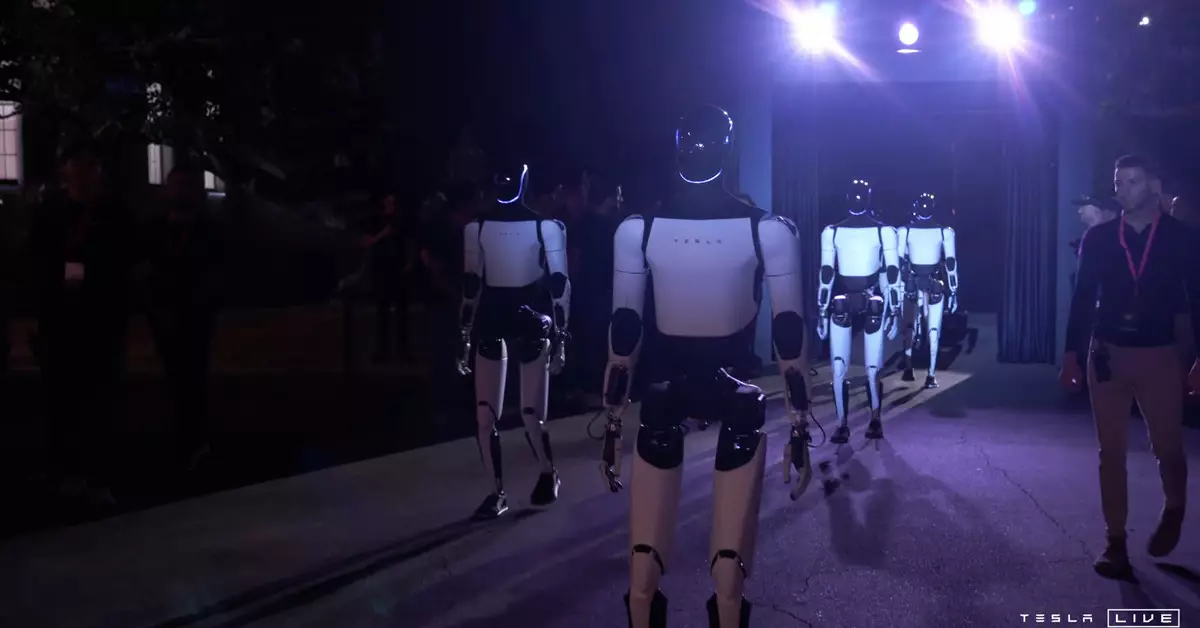In a groundbreaking showcase at Tesla’s Cybercab event, the tech giant unveiled its latest innovation: the Optimus humanoid robot. This highly anticipated announcement marks a significant step in Tesla’s exploratory leap beyond electric vehicles, as they venture into the realm of robotics. CEO Elon Musk, known for his ambitious goals and visionary mindset, presented the Optimus robot as an assistant capable of performing a myriad of human tasks. Musk curiously quipped, “The Optimus will walk amongst you,” hinting at a future where robots and humans coexist more seamlessly than ever before.
Musk’s enthusiastic rhetoric included assurances that these robots could handle everything from mundane errands, like walking a dog or watering plants, to serving drinks at social gatherings. With an expected price point estimated between $20,000 and $30,000, the Optimus is positioned not just as a technological marvel, but also as an economically-accessible assistant for the masses. Musk boldly asserted, “I think this will be the biggest product ever of any kind,” suggesting a transformative goal that surpasses the foundational impact of Tesla’s vehicles.
However, the live demonstration following Musk’s lively presentation provided a contrasting narrative. Observers watched as the Optimus robots navigated the event space, performing tasks that felt more akin to paraded curiosities than practical tools. The footage showcased robots interact with attendees in ways that were limited and lacked the complexity promised by Musk. The bots managed tasks such as waving or holding a cup but hardly displayed the multifaceted capabilities of a personal assistant. While one optimistic robot entertained guests with a game of rock-paper-scissors, the overall impression remained tepid.
Rather than being the futuristic marvels Musk described, the actual functioning of the robots felt rudimentary. For many, this highlights a crucial aspect of Tesla’s reveal: while the concept of an all-capable robotic assistant is tantalizing, the operational execution currently seems to lag behind. The comparison to earlier demos, especially the tongue-in-cheek performance of a man in a robot costume during the initial announcement in 2021, underscores a trend of grand expectations juxtaposed against the grounded reality of early-stage robotics.
Bringing forth the promise of widespread human-robot interaction requires not only innovative design but also practical implementation. Musk hinted that Optimus could begin to perform “useful tasks” by the end of this year and might be available for external sale next year. What remains to be seen is whether Tesla can transition from conceptual aspirations to deliverable products that integrate seamlessly into daily life.
As public perception oscillates between excitement and skepticism, the culture surrounding robotic development is being challenged. It is essential for companies like Tesla to not only continue pushing the envelope but to ensure that they can deliver functional, safe, and reliable products to match the expectations of their enthusiastic audience. With each stride, the reality of human-robot coexistence inches closer, but the journey is intricate and requires clear pathways to navigate between innovation and practical application.
While Tesla’s unveiling of the Optimus robot set bold aspirations into motion, delivering on the promise of a robotic future will require patience, refinement, and accountable progress in technology. The world watches with hopeful anticipation as this electric vehicle company takes its first major steps into the realm of personal robotics.

